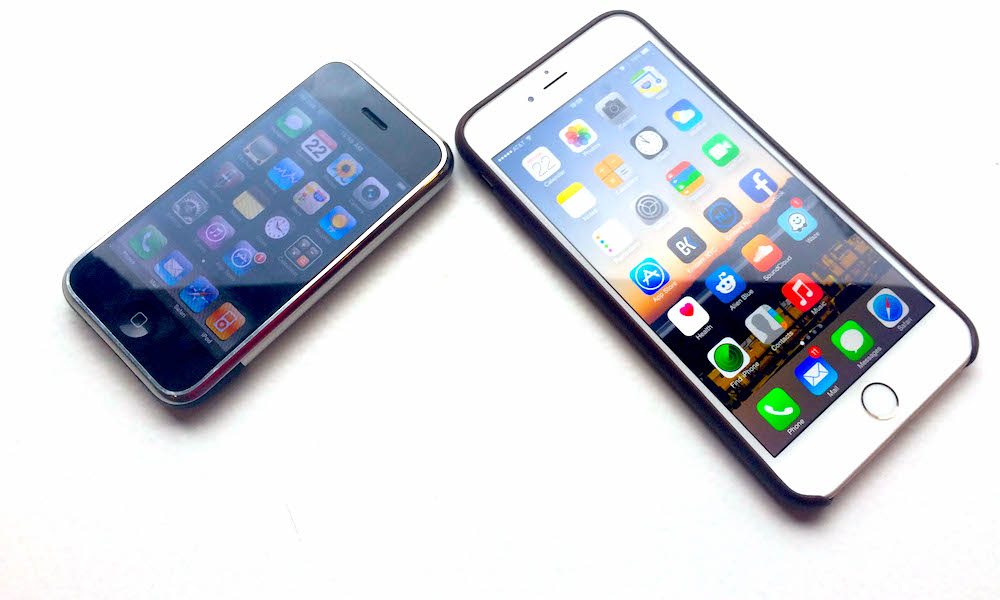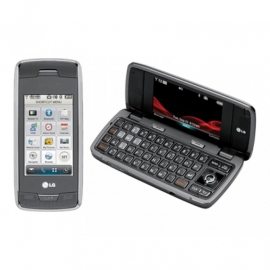How Apple’s iPhone Crushed the Competition and Became an Icon

Toggle Dark Mode
On a warm afternoon during the month of June, 2007, Apple released its first iPhone handset. And it did to much fanfare, indeed, as the Silicon Valley tech-giant’s foray into the mobile space ultimately put to rest months of eager speculation.
Yet, little did Apple know at the time, that device — with its 3.5-inch touchscreen, 412 MHz ARM 11 processor, 4 or 8 GB of built-in storage, and paltry little 2 MP camera — would ultimately come to change the game as we knew it.
Accordingly, during the months that followed, Apple’s debut handset enjoyed a fairly substantial moment in the limelight — ultimately selling nearly 5.5 million units within the first fiscal year of its launch. This was an incredible milestone, indeed, which nobody could have ever foretold. Not AT&T — the iPhone’s exclusive launch partner, not Apple, and perhaps most importantly, certainly not the many other domestic wireless carriers that were left in quite the awkward position.
In light of the iPhone’s overwhelming success, well, these wireless carriers were scrambling, needless to say. Simply put, those left in the lurch were desperate — desperate to release a handset that could some how, some way compete with Apple’s iPhone, boasting its inherently gorgeous, touchscreen display, powered by the first iteration of iPhone OS, which, re-christened as iOS just a few years later, which would ultimately grow up over the years to become a world-leading mobile operating system.
Fortunately for Sprint and Verizon, however, several other leading manufacturers at the time were very interested in building a device that could somehow compete with Apple’s. And, well, they did just that.. Sort of..
LG brought to the table a few handsets, actually. These phones included the Voyager — with dual-screens, dual-speakers, QWERTY keyboard, and clamshell design, as a Verizon exclusive. LG also introduced the Dare, which boasted an all-touchscreen design similar to the iPhone. Even Samsung, Cupertino’s current arch-nemesis, launched the Instinct — arguably its first legitimate touchscreen handset — in March of the following year.
As sad as it is to say, though, none of these devices could truly, truly compete with the iPhone. They were either far too cumbersome, or encompassed far too much plastic, and not to mention, none of them featured anything even close to the simplicity and ease-of-use iPhone OS brought to the table. Not even the hyper-fast (for the time) 3G networks these competing phones operated on could save them from iPhone’s takeover.
Samsung’s Instinct Competes with iPhone
Sure, these quote unquote “iPhone killers” — as they were often referred — boasted a fairly substantial assortment of cool features in their own right, including HTTP web browsers, and feature-rich ‘dumb-phone’ operating systems. However, how could they really compete with an operating system that, even in its earliest stages, effectively brought a scaled-down version of Apple’s fully-fledged OS X into the mobile space?
Even on day one, the iPhone could do so many things that were unique to “smartphones” of its time — not to mention, carry out those functions in a fashion that was so much more interactive than its competitor’s devices. Early reviews, from those like CNET, generally praised the iPhone… “The Apple iPhone has a stunning display, a sleek design, and an innovative multitouch user interface. Its Safari browser makes for a superb Web surfing experience, and it offers easy-to-use apps. As an iPod, it shines.” It’s clear that the iPhone’s advanced touchscreen and music capabilities made it a winner.
And, contrary to some younger people’s beliefs, Apple’s iPhone was not the very first mobile smartphone to feature a touchscreen display. Manufacturers such as Palm and Hewlett Packard, for instance, had released several devices long before iPhone. However, it could be argued that iPhone was the first device to perfect the mobile touchscreen experience, and it didn’t take long for the iPhone to come around and steal the spotlight from those other touchscreen devices.
But let’s not forget how iPhone ultimately stole the spotlight in the first place, shall we? The iPhone offered would be customers a departure from the same old song and dance. It offered them a truly remarkable, intuitive user experience — one that only blossomed, all the more, with each successive generation that followed.
In fact, by the time Apple’s iPhone 4 was unveiled at WWDC 2010, an event whereat the company’s iPhone OS was renamed iOS, the device was poles apart from what options were initially available. Even Android, having been released during the summer of 2008, could hardly compete — particularly since its many, many OEMs simply could not emulate the aesthetics of what many referred to as “The Rolls Royce” of mobile handsets.
Not to mention, in 2010, most Smartphone manufacturers — such as Samsung, in particular, with its 2010 debut of the Android-powered Galaxy S series — were just playing catch up.
Today, the iPhone is essentially a handheld computer, in and of itself. I personally know a number of people who use their iPhones to browse the web, send email, and conduct a slew of other, internet-based tasks — even far more than they do using their dedicated PC/Mac computers.
Granted, times have changed considerably since that summer afternoon in June, 2007. But what will always remain the case, historically speaking, regardless of the rate at which any manufacturer can innovate, is that the iPhone was, is, and perhaps always will be the best of the best. And Apple will only continue to innovate — with both its software and hardware — as we progress into the future.
How do you feel about your iPhone? Is it truly “the best of the best?” Let us know in the comments!
Featured Photo International Business Times








